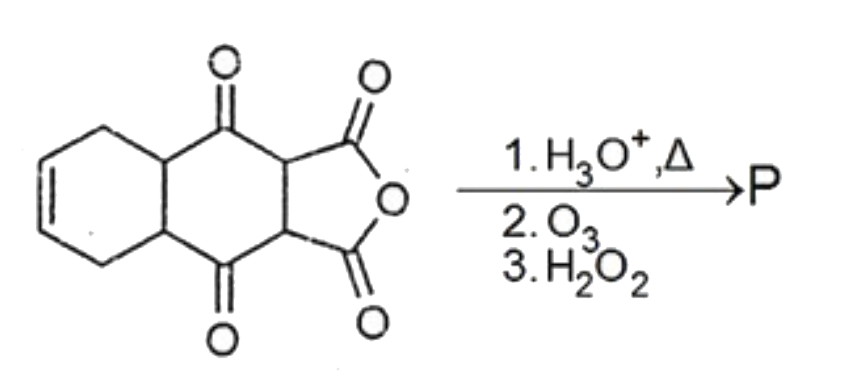Attachment of vinyl group or phenyl group directly to carboxylic acid group has effect on the acidic character of that carboxylic acid. Explain.
To understand how the attachment of a vinyl group (−CH=CH2) or a phenyl group (−C6H5) directly to a carboxylic acid group affects its acidic character, we need to analyze the factors that influence acidity in carboxylic acids.
1. Understanding Carboxylic Acids:
- Carboxylic acids have the general formula RCOOH, where R can be hydrogen or a hydrocarbon group. The acidic character of carboxylic acids is primarily due to the ability of the carboxyl group (−COOH) to donate a proton (H+).
2. Effect of Substituents:
- The acidic strength of carboxylic acids can be influenced by the nature of the substituent (R) attached to the carboxyl group. Electron-withdrawing groups tend to increase acidity, while electron-donating groups decrease acidity.
3. Vinyl Group (−CH=CH2):
- The vinyl group is an alkene group that has sp2 hybridization. The sp2 carbon is more electronegative than an sp3 carbon, which can stabilize the negative charge that develops on the carboxylate ion (RCOO−) after deprotonation.
- Additionally, the vinyl group can participate in resonance. For example, when the carboxylic acid donates a proton, the resulting carboxylate ion can have resonance structures that involve the double bond of the vinyl group, further stabilizing the ion.
4. Phenyl Group (−C6H5):
- The phenyl group is a stable aromatic ring that also has sp2 hybridization. Like the vinyl group, the phenyl group can stabilize the negative charge on the carboxylate ion through resonance.
- The delocalization of the negative charge over the aromatic ring enhances the stability of the carboxylate ion, thus increasing the acidity of the carboxylic acid.
5. Conclusion:
- Both the vinyl and phenyl groups increase the acidic character of the carboxylic acid due to the greater electronegativity of the sp2 carbon and the resonance stabilization of the carboxylate ion. This results in a stronger tendency to donate a proton, making the acid more acidic.
Summary:
The attachment of vinyl or phenyl groups to a carboxylic acid enhances its acidic character due to the increased electronegativity of the sp2 carbon and the resonance stabilization of the resulting carboxylate ion.
- Carboxylic acids have the general formula RCOOH, where R can be hydrogen or a hydrocarbon group. The acidic character of carboxylic acids is primarily due to the ability of the carboxyl group (−COOH) to donate a proton (H+).
- The acidic strength of carboxylic acids can be influenced by the nature of the substituent (R) attached to the carboxyl group. Electron-withdrawing groups tend to increase acidity, while electron-donating groups decrease acidity.
- The vinyl group is an alkene group that has sp2 hybridization. The sp2 carbon is more electronegative than an sp3 carbon, which can stabilize the negative charge that develops on the carboxylate ion (RCOO−) after deprotonation.
- Additionally, the vinyl group can participate in resonance. For example, when the carboxylic acid donates a proton, the resulting carboxylate ion can have resonance structures that involve the double bond of the vinyl group, further stabilizing the ion.
- The phenyl group is a stable aromatic ring that also has sp2 hybridization. Like the vinyl group, the phenyl group can stabilize the negative charge on the carboxylate ion through resonance.
- The delocalization of the negative charge over the aromatic ring enhances the stability of the carboxylate ion, thus increasing the acidity of the carboxylic acid.
- Both the vinyl and phenyl groups increase the acidic character of the carboxylic acid due to the greater electronegativity of the sp2 carbon and the resonance stabilization of the carboxylate ion. This results in a stronger tendency to donate a proton, making the acid more acidic.
The attachment of vinyl or phenyl groups to a carboxylic acid enhances its acidic character due to the increased electronegativity of the sp2 carbon and the resonance stabilization of the resulting carboxylate ion.
Similar Questions
Knowledge Check
- Question 1 - Select One
Assertion : Direct attachment of groups such as phenyl or vinyl to the carboxylic acid, increases the acidity of the carboxylic acid.
Reason : Resonance effect always increases the acidity of carboxylic acids.AIf both assertion and reason are true and reason is the correct explanation of assertion.BIf both assertion and reason are true but reason is not the correct explanation of assertion.CIf assertion is true but reason is false.DIf both assertion and reason are false. - Question 2 - Select One
Carboxylic acid group can be detected by which test ?
ASodium bisulphite testBFehling's solution testCTollen's reagentDWith NaHCO3 - Question 3 - Select One
Carboxylic acids dimerise due to
Ahigh molecular weightBcoordinate bondingCintermolecular hydrogen bondingDcovalent bonding.
An extra carboxylic group is present in
View SolutionWhy is peroxy acid weaker than carboxylic acid ?
View SolutionThe correct order of acidic strength of the carboxylic acid is
View SolutionThe total number of carboxylic acid groups in the product P is
 View Solution
View SolutionWhat is the effect of substituent on the acidic strength of carboxylic acids?
View Solution


